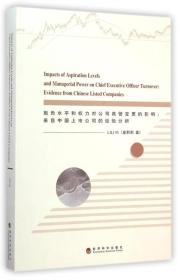
抱负水平和权力对公司高管变更的影响:来自中国上市公司的经验分析
¥ 45.06 5.6折 ¥ 80 全新
仅1件
作者皮莉莉 著
出版社经济科学出版社
出版时间2015-01
版次1
装帧平装
货号R2库 11-12
上书时间2024-11-13
- 在售商品 暂无
- 平均发货时间 25小时
- 好评率 暂无
- 最新上架
商品详情
- 品相描述:全新
图书标准信息
- 作者 皮莉莉 著
- 出版社 经济科学出版社
- 出版时间 2015-01
- 版次 1
- ISBN 9787514150216
- 定价 80.00元
- 装帧 平装
- 开本 16开
- 纸张 胶版纸
- 页数 434页
- 字数 500千字
- 正文语种 简体中文,英语
- 【内容简介】
-
西方国家现有的很多研究分析了公司业绩和CEO变更之间的关系。但是,这些研究至少具有两方面的局限性。一方面,现有的研究大部分关注西方发达国家CEO变更,像中国这样的处于转轨过程中的发展中国家很大程度上被忽视了。另一方面,现有的研究忽视了相对业绩和组织内部的权力政治斗争对CEO变更的影响。鉴于此,《抱负水平和权力对公司高管变更的影响:来自中国上市公司的经验分析》从前景理论、企业行为理论、委托-代理理论、战略权变理论和资源依赖理论等出发,现有西方的组织战略变化、公司抱负水平、公司权力等方面的文献进行了仔细梳理后,对抱负水平和组织内部权力结构对CEO变更的影响进行了理论分析,并提出了一个CEO变更的模型和一系列的假设。
为了验证本研究提出的CEO变更模型和相关的假设,本研究收集了一个325家上市公司,从1997年到2006年10年的面板数据。广义估计方程,一种前沿的面板数据分析方法被用于分析CEO变更、董事会的抱负水平、以及CEO的权力水平之间的关系。为了增强本研究的可信程度,本研究同时还运用另一种前沿的面板数据分析方法,随机效应模型,来进行实证分析。结果发现,两种方法得出了相似的结果。也即是董事会的抱负水平影响CEO变更,当抱负水平高于公司业绩时,CEO被变更的可能性明显地增高;相反,当抱负水平低于公司业绩时,CEO被变更的可能性明显地下降。CEO的权力的高低也影响CEO被变更的可能性。 - 【作者简介】
- 皮莉莉,广州市社会科学院副研究员,博士,毕业于澳大利亚巴拉瑞特大学商学院。现从事公司战略管理和公司治理结构方面的研究,曾在AsiaPacificJournalofManagement(SSCI),JournalofStrategiCManagementEducation,《改革》等国内外学术期刊发表学术论文20余篇。
- 【目录】
-
ChapterOneIntroduction
1.1Researchbackground
1.2Researchquestion
1.3Researchobjectives
1.4Thesignificanceofthisresearch
1.5Overviewofthethesis
1.6Chapterconclusion
ChapterTwoTheChineseInstitutionalContext:ImplicationsforCEOTurnover
2.1Introduction
2.2Economicdevelopment:1978-2013
2.3SOEreform:1978-2013
2.4CharacteristicsoflistedcompaniesinChina
2.5Chapterconclusion
ChapterThreeLiteratureReview
3.1Introduction
3.2CEOturnover:definitionandcategorisation
3.3AntecedentsofforcedCEOturnover
3.4CEOturnoverandtheaspirationlevel
3.5Chapterconclusion
ChapterFourTheoreticalFrameworkandHypothesisDevelopment
4.1Introduction
4.2Theoreticalframework:amodelofCEOturnover
4.3Developmentofhypotheses
4.4Chapterconclusion
ChapterFiveResearchMethodology,Design,andProcess
5.1Introduction
5.2Justificationoftheknowledgeclaim:apositivistperspective
5.3Justificationofresearchstrategy:quantitativeresearchandsecondarydata
5.4Researchmethod
5.5Chapterconclusion
ChapterSixPreliminaryDataAnalysis
6.1Introduction
6.2Demographicstatisticsofsamplecompanies
6.3Descriptivestatistics
6.4Correlationcoefficientanalysis
6.5Missingdatapatternsandmechanismsassessment
6.6Chapterconclusion
ChapterSevenEmpiricalResults
7.1Introduction
7.2Theselectionofthebestcorrelationstructure
7.3EstimatedresultsforCEOturnover
7.4EstimatedresultsforforcedCEOturnover
7.5EstimatedresultsforvoluntaryCEOturnover
7.6Summaryofhypothesistesting
7.7Chapterconclusion
ChapterEightDiscussion
8.1Introduction
8.2PerformancerelativetoagivenaspirationlevelandCEOturnover
8.3CEOpowerandCEOturnover
8.4ControlvariablesandCEOturnover
8.5Chapterconclusion
ChapterNineConclusion
9.1Introduction
9.2Principalfindings
9.3Implications
9.4Contributions
9.5Limitations
9.6Directionsforfuturestudy
References
AppendixSupportingTablesandFigures
相关推荐
-

抱负水平和权力对公司高管变更的影响:来自中国上市公司的经验分
全新保定
¥ 22.40
-

抱负水平和权力对公司高管变更的影响:来自中国上市公司的经验分析
九五品保定
¥ 20.00
-

抱负水平和权力对公司高管变更的影响:来自中国上市公司的经验分析
全新泰安
¥ 47.06
-

抱负水平和权力对公司高管变更的影响:来自中国上市公司的经验分析。。
九品鹤壁
¥ 13.60
-

抱负水平和权力对公司高管变更的影响:来自中国上市公司的经验分析
九品鹤壁
¥ 20.00
-

抱负水平和权力对公司高管变更的影响:来自中国上市公司的经验分析
九品上海
¥ 15.00
-

抱负水平和权力对公司高管变更的影响来自中国上市公司的经验分析
九五品北京
¥ 15.00
-

抱负水平和权力对公司高管变更的影响:来自中国上市公司的经验分析
九品上海
¥ 15.00
-

抱负水平和权力对公司高管变更的影响:来自中国上市公司的经验分析:evidence form Chinese listed companies
全新广州
¥ 49.28
-

抱负水平和权力对公司高管变更的影响:来自中国上市公司的经验分析:evidence form Chinese listed companies9787514150216
全新广州
¥ 72.00
— 没有更多了 —

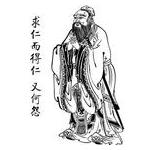
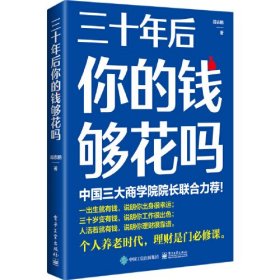
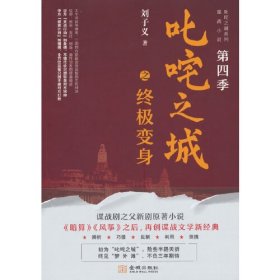
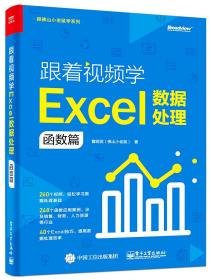









以下为对购买帮助不大的评价